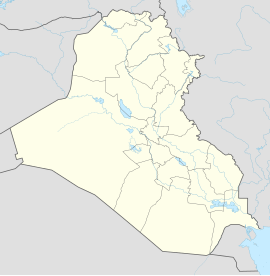Sêmêl
| Sêmêl | ||
|---|---|---|
| location | ||
|
|
||
| Coordinates | 36 ° 51 ′ N , 42 ° 51 ′ E | |
| Country |
|
|
| Autonomous Region | Kurdistan | |
| Governorate | Dahuk | |
| District | Dahuk | |
| Basic data | ||
| Residents | 50,000 (estimated) | |
| Semile in 2012 | ||
Sêmêl or Semile ( Kurdish سێمێل Sêmêl ; Arabic سميل, DMG Sumail ) is a city in the Iraqi province of Dahuk and belongs to the Kurdistan Autonomous Region . Semile is on an important road that connects Iraq with Turkey . The city is 14 km west of Dohuk .
At the beginning of the 20th century, Semile was a small Kurdish village. After the First World War , many Assyrians came to Semile from the Hakkari area . They had fled the mass murders of the Ottomans against the Christian Armenians and Assyrians. Not long after the establishment of Iraq, the Assyrian people were again the target of murder and displacement. On August 7, 1933, the Semile massacre took place. But the events were not just limited to Semile, but to much of northern Iraq. There were at least 3,000 victims. Thousands of Assyrians fled to Syria where there are currently 33 Assyrian villages in the area of the Khabur .
In the following years the population increased due to the important geographical location of the city and the resettlement of people from neighboring villages. Most of the residents work in agriculture. Others are traders. There are currently around 170 Assyrian families living in Semile. They are members of the Chaldean Catholic Church and the Assyrian Church of the East . The Chaldean church in Semile is called "The Holy Virgin Mary", the Assyrian "Church of the Martyrs". There are also 12 Armenian families. The Kurds make up the majority of the population. Semile has been part of the Kurdistan Autonomous Region since the second Gulf War .
In 1992 Duhok University established an agricultural faculty in Semile.
Individual evidence
- ↑ FIDH Report on Ethnic Cleansing in Iraq. (PDF; 511 kB) The Semile massacre is described on page 17.

